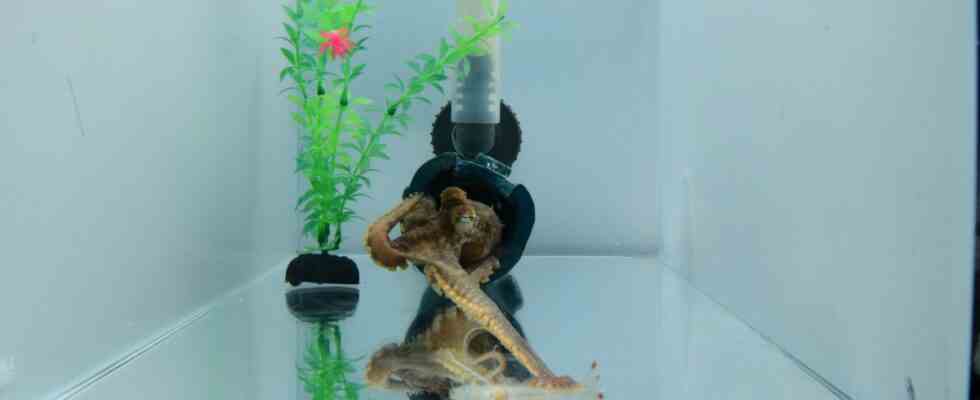Apparently, octopuses use their limbs in a very targeted manner – depending on whether they are pursuing, ambushing or sneaking up on their prey, different sequences of movements are used.
When hunting, octopuses adapt the use of their eight arms to the respective prey. Crabs, which are slow to flee, usually overwhelm the animals by using several arms at once – sometimes they jump on the prey like a cat on a mouse. On the other hand, when chasing quickly fleeing shrimp, they use their arms more purposefully and one after the other, reports a team of US researchers in the journal Current Biology. The second arm on the right and left side of the body, viewed from the front, has a dominant function.
If you just look at an octopus for a moment, the movements usually don’t seem repeatable, said study leader Trevor Wardill of the University of Minnesota in a statement from the university. “They’re fidgeting and just looking weird in their exploratory movements.” For a more detailed analysis of the movement sequences, the researchers filmed Californian two-spotted octopuses (Octopus bimaculoides) in an aquarium. They added either white leg shrimp or fiddler crabs and watched the octopuses subdue the prey from their hiding place.
The researchers were able to distinguish between three approaches used by the octopuses: the animals approached from ambush, pursued the prey or crept up to it cautiously. As the analysis showed, shrimp were more likely to be attacked from ambush or after sneaking up on them, while crabs were more often pursued.
Crabs were overpowered with two to six arms, shrimp snapped with one arm
Next, the researchers analyzed the actual attack and how the four pairs of arms – numbered from one to four on each side of the body – are used. The slower crabs were more often overpowered by the simultaneous use of two to six arms. The second arm in each case dominated. The faster shrimp were attacked more cautiously and more specifically – often with the second arm first. Once this made contact with the prey, the octopuses secured their prey with the two adjacent arms.
The scientists continue to report that the arms on the left and right side of the body are basically equal. The use often depends on the field of vision: If prey animals were perceived with the left eye, the arms on the left side of the body would be used in an attack.
The analysis further showed that the octopuses used only a small part of all theoretically possible arm combinations when hunting. So they do seem to be using their arms very purposefully indeed.

